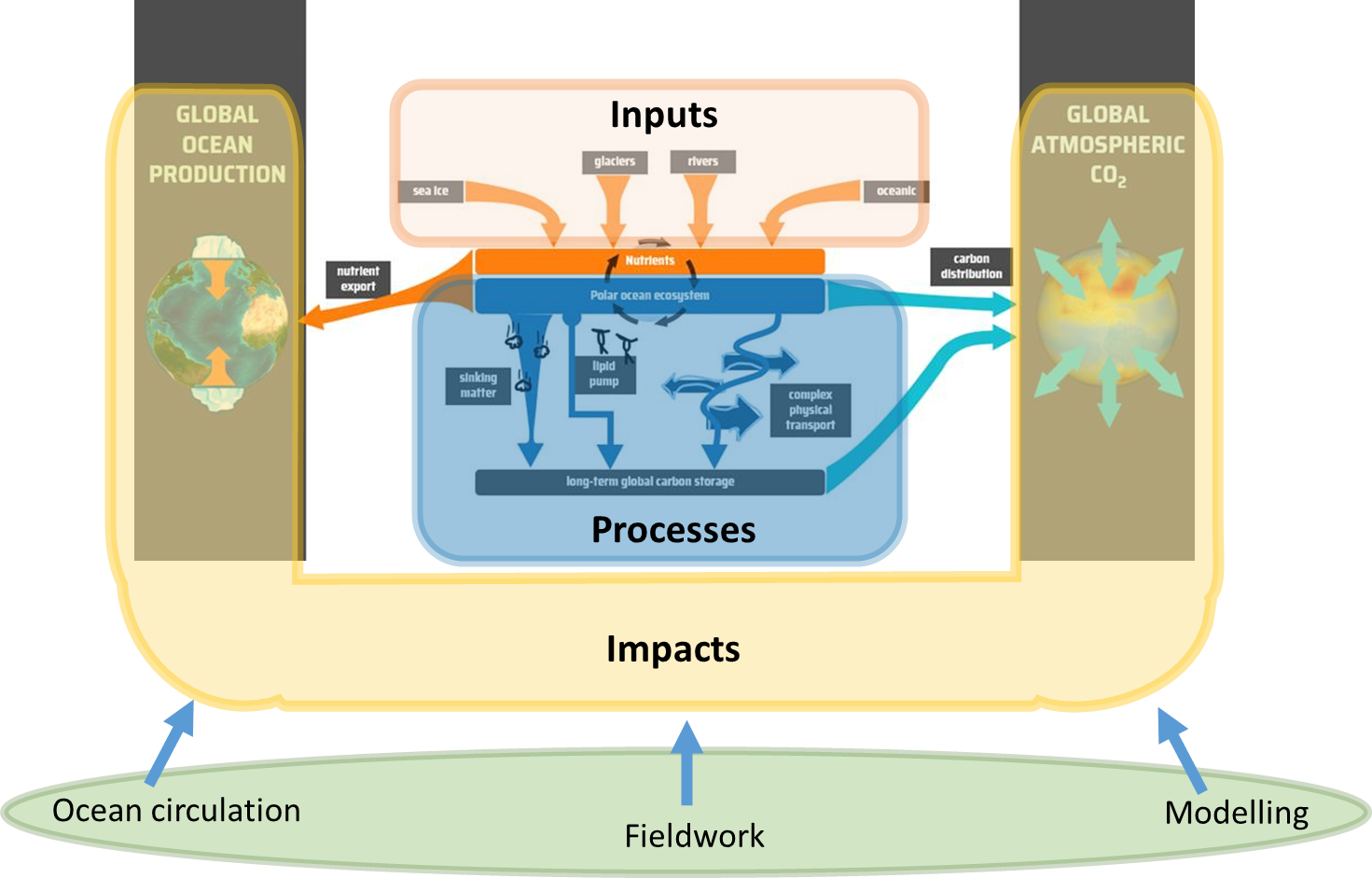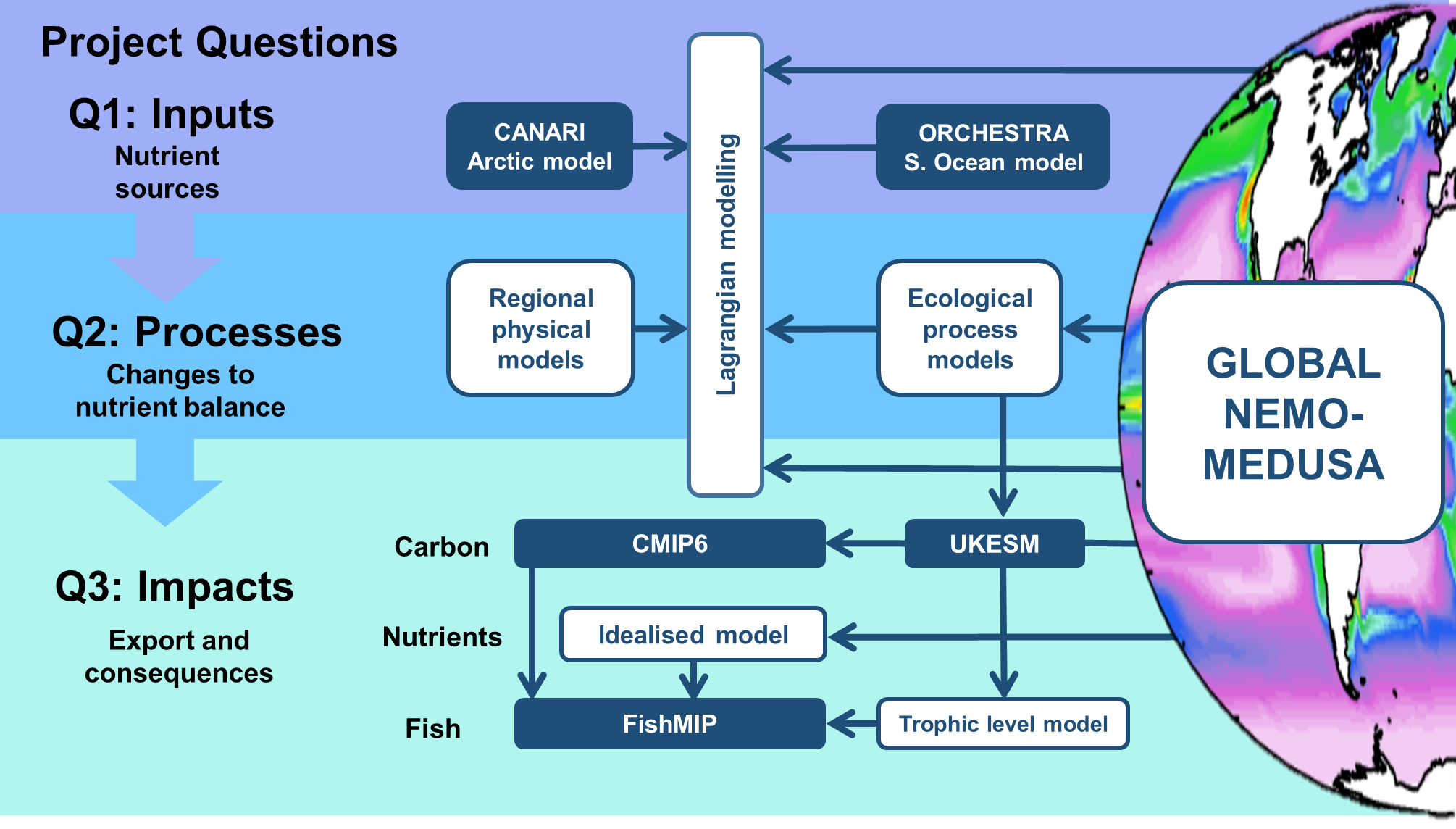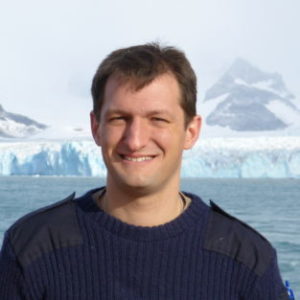WP3 will combine focussed field sampling and a range of modelling approaches to track and quantify elemental pathways out of the poles. Jointly with WP1 and WP2 it will synthesise results to determine the global consequences of non-Redfield processes at the poles for global carbon sequestration, nutrient supply and fish stocks.
- The global significance of the lipid pump depends on how much carbon is transferred to depth and how long it remains out of contact with the atmosphere. We will use two complementary approaches to assess this, using both observations and models.
- The quantity and stoichiometry of nutrients leaving the poles both now and in the future is uncertain. As part of addressing the current uncertainty, for the Arctic WP3 aims to measure exiting nutrient concentrations throughout the year by adding water samplers to the Davis Strait mooring array (NSF,USA) and by collaborating with Alfred Wegener Institute (Germany) who monitor Fram Strait.
- Synthesising observations with data upstream at Chukchi Shelf (WP2) and sources of nutrients (WP1) will allow us determine the dominant controls on excess P leaving the Arctic.
- To examine how the nutrient fluxes leaving the polar regions will change in time, we will analyse Earth System Model (ESM) simulations for different future scenarios.
- To determine how anticipated changes in polar regions affect global fish stocks requires two steps. First, we will link variations in polar export to shifts in nutrient supply and primary production downstream. Second, we will assess how primary production translates into global fish biomass using a suite of models.

This will be done through three tasks in WP3:
- 3.1 Lipid pump estimates and fate of the carbon
- 3.2 Nutrient exports from poles
- 3.3 Global fishery impacts

Planned timeline for our global model analysis
Apr 2022-2024
Analysis of CMIP6 models (incl. different SSPs) to investigate how primary production and nutrient fluxes out of the polar regions change out to 2300.
Apr 2023-2026
Lagrangian simulations to determine how the dominant nutrient export pathways may change with time utilising high-resolution NEMO-MEDUSA model runs out to 2100. Lagrangian simulations run with parcels – https://oceanparcels.org/.
Apr 2024-2027
Lagrangian simulations to determine the fate of the lipid pump carbon flux in the Southern Ocean, i.e. whether it returns to the mixed layer or remains sequestered. Lagrangian simulations run with parcels – https://oceanparcels.org/.


